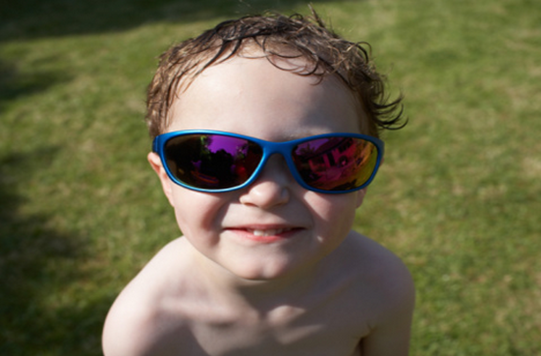With the dazzling sun shining day after day, sunglasses have become a must for kids, especially since sunglasses can prevent bright light in children’s eyes, as well as meeting the need for fashion. However, according to the survey released by Shanghai Consumer Council (SCC), not all sunglasses are good for kids.

The first index SCC tested was the impact resistance. Kids enjoy running around. Therefore, if the sunglasses aren’t durable enough, the broken glasses can hurt their eyes. Fortunately, all of the sunglasses tested resisted cracking and shattering.
The second index SCC tested was the UV protection. Kids’ eyes are more susceptible to UV radiation than adult eyes. And it is known to all that UV rays can cause significant damage—from short-time discomfort to cancer. Therefor, sunglasses had to block 100 percent of the sun’s UV rays. Among the tested sunglasses, seven didn’t pass the UV-400 test, including Hindfietd, Lenle, DOES, Chiao Mann, Happykids, BERTHA and Crayon Shin-chan.
SCC also tested the traffic signal transmission ratio of the sunglasses, which is a key standard for kids’ sunglasses on account of its direct link to their ability to tell the traffic lights while wearing sunglasses. It turned out that the brands Hindfietd, Smartkids and Miss Hamtons failed the test.

Here we have prepared three tips for you to pick the right pair of sunglasses for your kids.
1. Pay Close Attention to the Label of the Sunglasses
The label of sunglasses not only contains the basic information of the corporation like the address or the production certificate, it also clarifies clearly whether the sunglasses have impact resistance or UV protection. So make sure to read it carefully!
2. Don’t Focus on the Darkness of the Lenses
Some parents may mistake that the darker the lenses, the better the sunglasses. Darkened lenses can effectively block the light. However, they can also affect the kids’ sensitivity to light. Therefore, sunglasses of category 2 or 3 are good enough for your kids. (Category 1-4 stands for the darkness of the lenses, 1 is light and 4 is deep)
3. Focus on the Quality of the Lenses Instead
The surface of a good lens should be clear and flawless. Also, when you put the sunglasses 15cm-20cm in front of you, you should be able to tell that there is no bending or distortion. Furthermore, the lenses should not cause color distortion. Otherwise, they may affect the ability to tell the traffic lights.


















